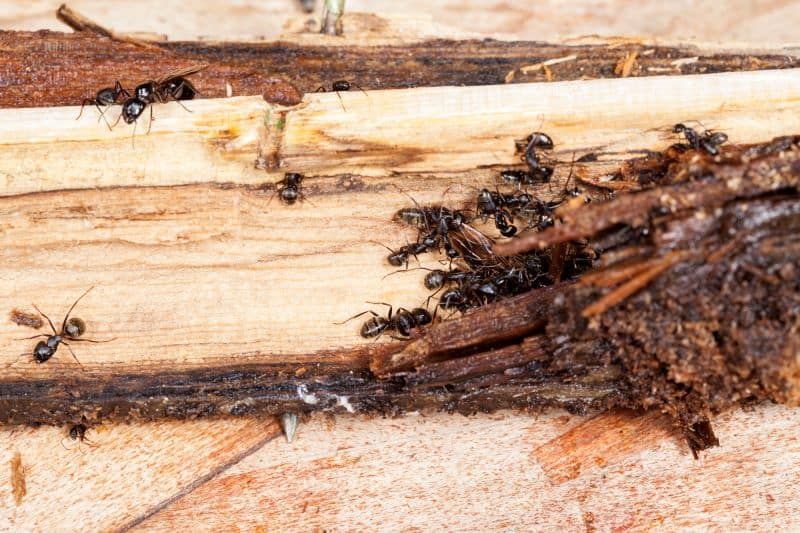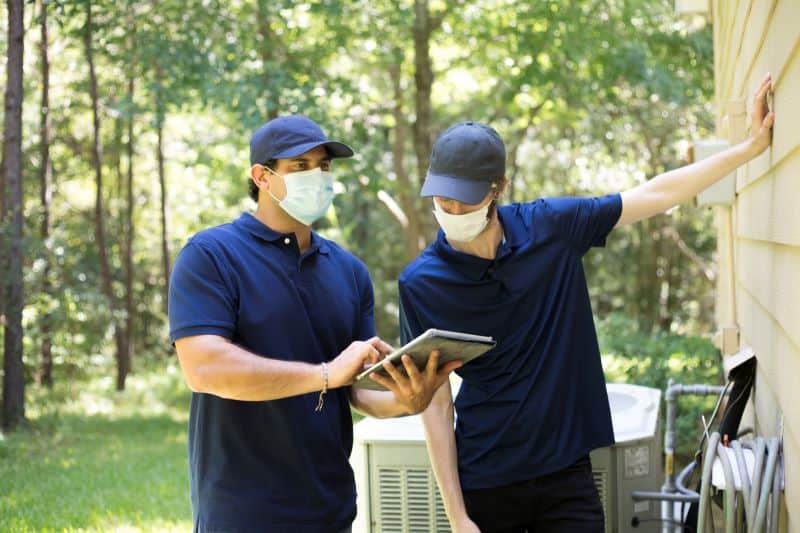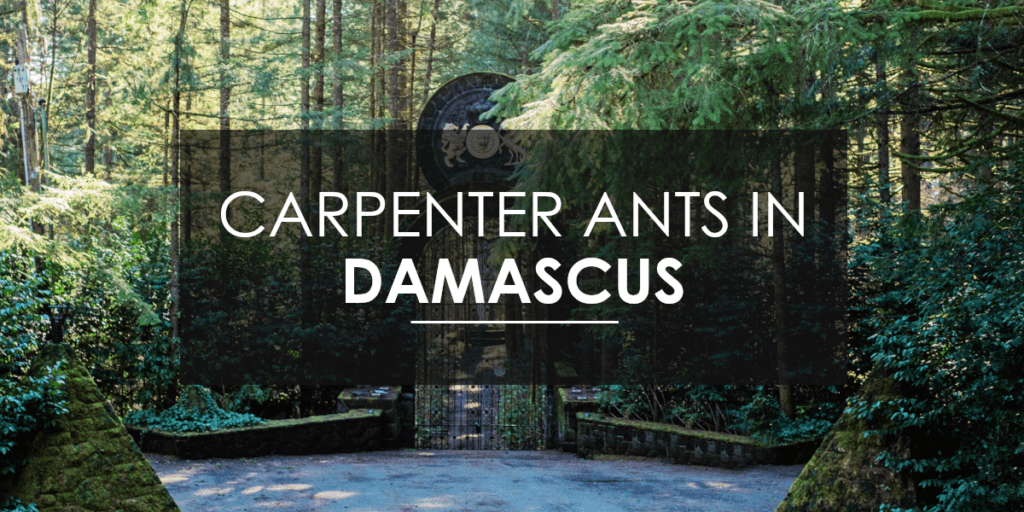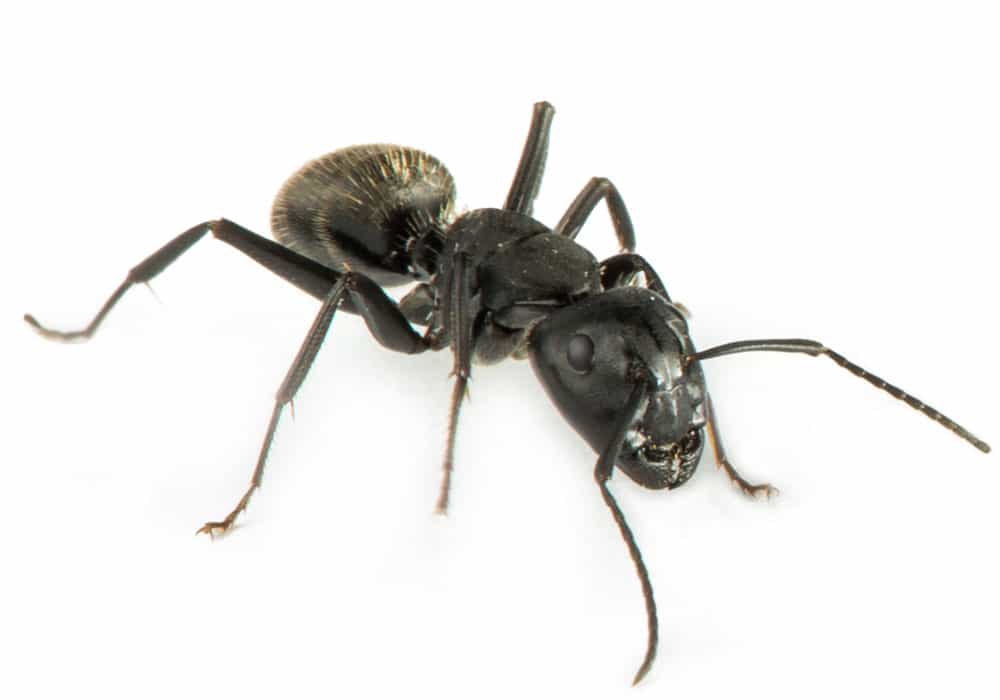Carpenter ants are not the same as termites
Carpenter ants are often misunderstood to be the same insect as termites, but they’re actually very different creatures. It’s easy to see why this is the case, as there are several similarities, but here are some things you should know about the carpenter ant.
Though there are over one thousand different varieties of carpenter ants around the world, the most common carpenter ant found in North America is the black carpenter ant.
Black carpenter ants are among the largest ants you’ll see in our area, with fully grown adults measuring up to a half-inch in length. These ants are mostly black in color, though many will sometimes have a faint red or yellow hue to them.
Termites consume wood, whereas carpenter ants burrow through in an effort to create safe spaces to nest and expand their colonies. Carpenter ants are actually predators, and their diets consist of dead, scavenged insects, aphids, and other food that can be foraged and brought back to the nest to be distributed.
Carpenter ants are social insects
As we mentioned before, carpenter ants live in colonies, and each ant has a distinct role to play in supporting the growth of its ever-expanding nests.
Inside a carpenter ant colony, you’ll find larvae, males, workers, and queens. A colony will often have multiple nesting sites, connected by systems of tunnels and consisting of several queens. Protection against predators, the maintenance of the colony, the development of tunnels, the foraging and distribution of food, among other responsibilities, are performed by the workers. The role they specialize in will typically depend on the size of the ant in question.
Male carpenter ants, generally the smallest group in the colony, exist to mate with the queens. Once they’ve completed their task, they will soon die.
There can be several queens within a colony, each responsible for their own smaller nest that is connected to the main nest. Though they are a part of the same colony, the queens can sometimes become territorial and aggressive. Boundaries must be respected.
Carpenter ant infestations look different from termite infestations

Though carpenter ants prefer to build their colonies in dead trees and dried-out wood, residential and commercial building materials aren’t entirely out of the question.
What’s more, carpenter ants are attracted to moisture-rich areas, making Happy Valley and the Pacific Northwest, in general, an attractive area for these pests to thrive.
Does your home’s wood have water damage or signs of rot, either inside or outside? These areas are particularly susceptible to carpenter ants, and could potentially be ways in which they could make their way into your home.
Are your gutters clogged? Are there any other maintenance or landscaping issues that might be preventing water from draining properly? If so, look carefully for signs of activity.
Examine the site where you suspect you might have an infestation. Seeing any small holes or splintering? Carpenter ants create what are called “galleries” in wood. If you can see them, they tend to be smooth and clean on the inside, and outside of the holes, you’ll see what appears to be very fine sawdust, in addition to other debris, including dead insects.
Conversely, the galleries that termites create are usually quite messy, filled with sand, mud, and even excrement outside of the entry points.
Once inside the home, insects tend to seek out similarly moist areas like in or around dishwashers, under sinks, bathrooms, or any plumbed area that is warm and damp.
Generally, the overall colony is not likely to be inside the home, but it’s probably nearby, and what you’re experiencing is a satellite colony that’s made its way inside. And if that’s the case, that means the infestation is spreading and will continue to do so.
Professional pest control will help you control carpenter ants

Sometimes, to the layperson, it can be difficult to tell the difference between a termite and carpenter ant infestation, let alone know how to approach the control piece.
The most important thing you can do when you’re concerned about pests is to contact professional help and to do it as soon as possible. The longer you wait, the more time the ants (or possibly termites!) have to lay more eggs and further grow the colony.
Our team of carpenter ant specialists will come to your home at a time that is convenient for you, discuss the situation and locations you’re concerned about, and will conduct a thorough inspection.
Once they’ve completed their investigation, they’ll share their findings with you, including any recommended treatment. Should you choose to move forward with treatment, they’ll apply commercial grade pesticide products — all pet, child, and environmentally friendly — in order to control the population of carpenter ants at your home and property.
To get even more comprehensive protection, we recommend investing in year-round pest control, so you’ll get protection from the pests you have, and preventative maintenance of the ones you otherwise would if you were to go without treatment. It’s a convenient and economical way to live a more relaxed, pest-free lifestyle.
Carpenter ant problem? Don’t delay — contact Aspen Pest Control today for carpenter ant treatment near you!







